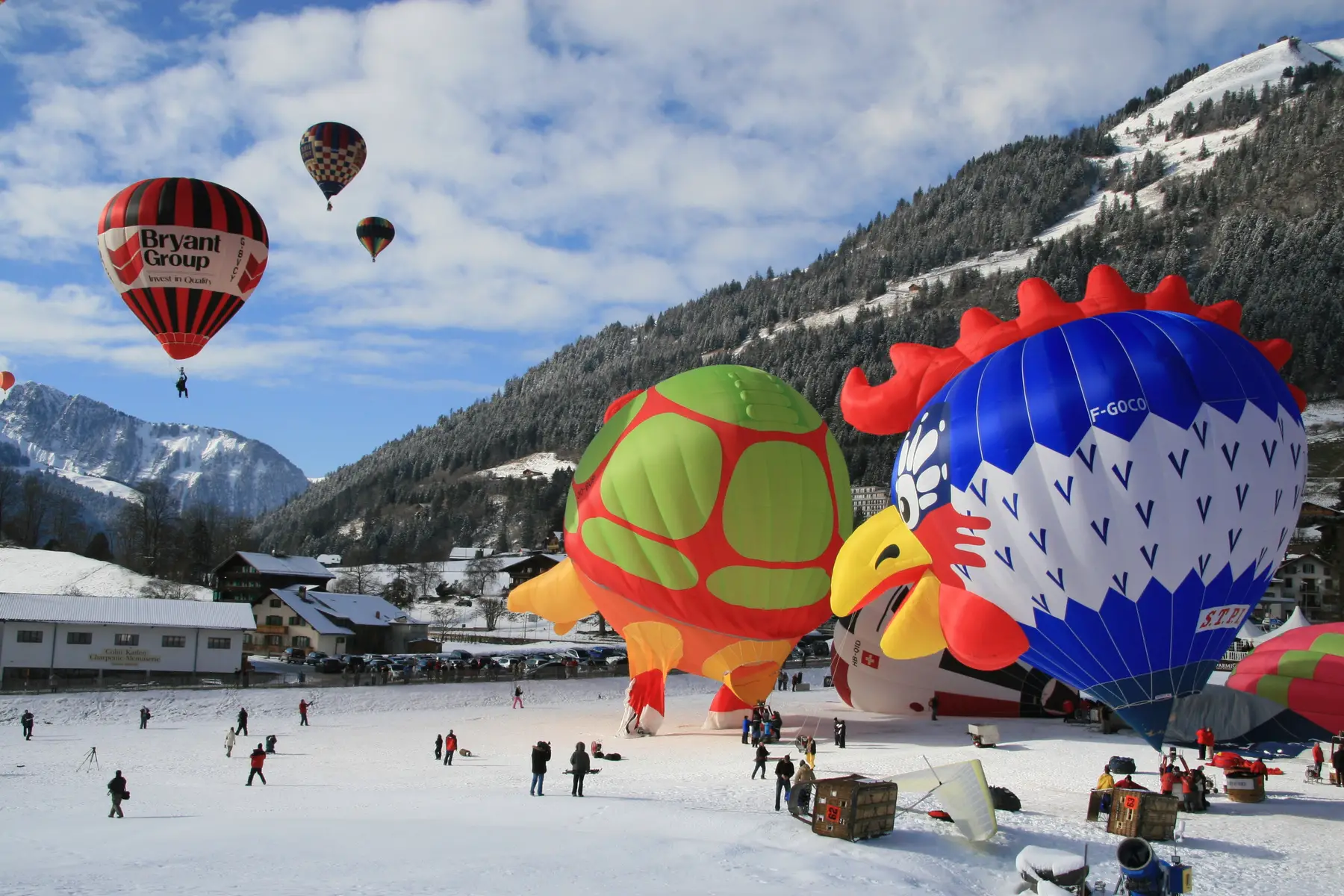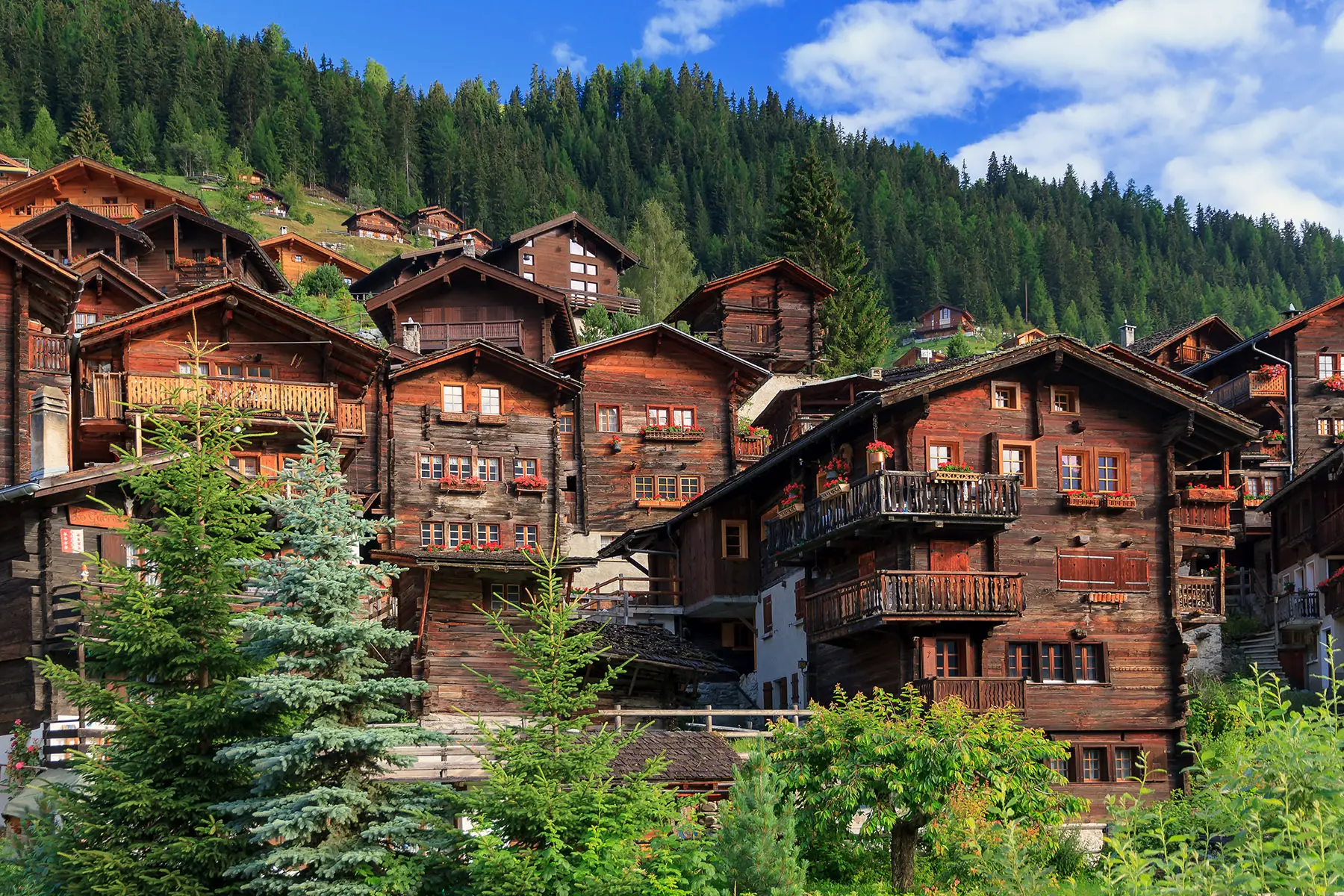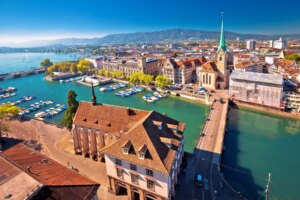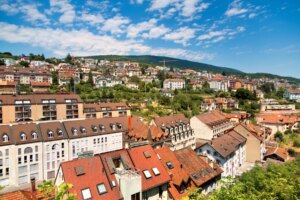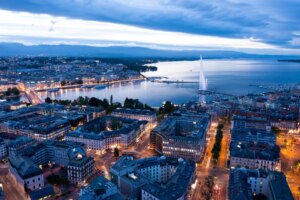If the richness of Swiss culture and the luxury of the Mediterranean lifestyle appeal, then you might consider moving to the Italian-speaking canton of Ticino. Encompassing charming towns like Lugano, Bellinzona, and Locarno, the region has plenty to offer expats looking to settle in the south. In fact, Ticino is so unique within Switzerland that Swiss locals and tourists alike flock to the region. Boasting incredible food, picturesque lakes and mountains, and a certain je ne sais quoi that can’t be replicated anywhere else, Ticino is a huge draw for internationals in the country.
To give you an idea of where to live in Lugano and other towns and cities in Ticino, this helpful guide includes the following information:
An overview of Ticino
Located on the border between Switzerland and Italy, the southernmost canton of Ticino is a world apart from the rest of the country. The idyllic region is home to incredible natural attractions and offers a laid-back Mediterranean way of life. Because of this, it is a draw for Swiss residents and tourists alike. Among Ticino’s many vibrant attributes, the most popular destinations are:
- Monte Tamaro – the highest mountain in Ticino is part of the Western Alps and overlooks the breathtaking Lake Maggiore
- Monte Brè – this scenic mountain offers spectacular views of Lake Lugano and the vibrant city; a funicular railway takes you to the top
- Monte Generoso– located on the Italian border, this mountain is home to the Fiore di Petra (“stone flower”) architectural landmark which sits on the summit and is accessible via a scenic railway
- Lake Lugano – named after the city of Lugano, this breathtaking glacial lake is a popular water sports destination for tourists and locals alike
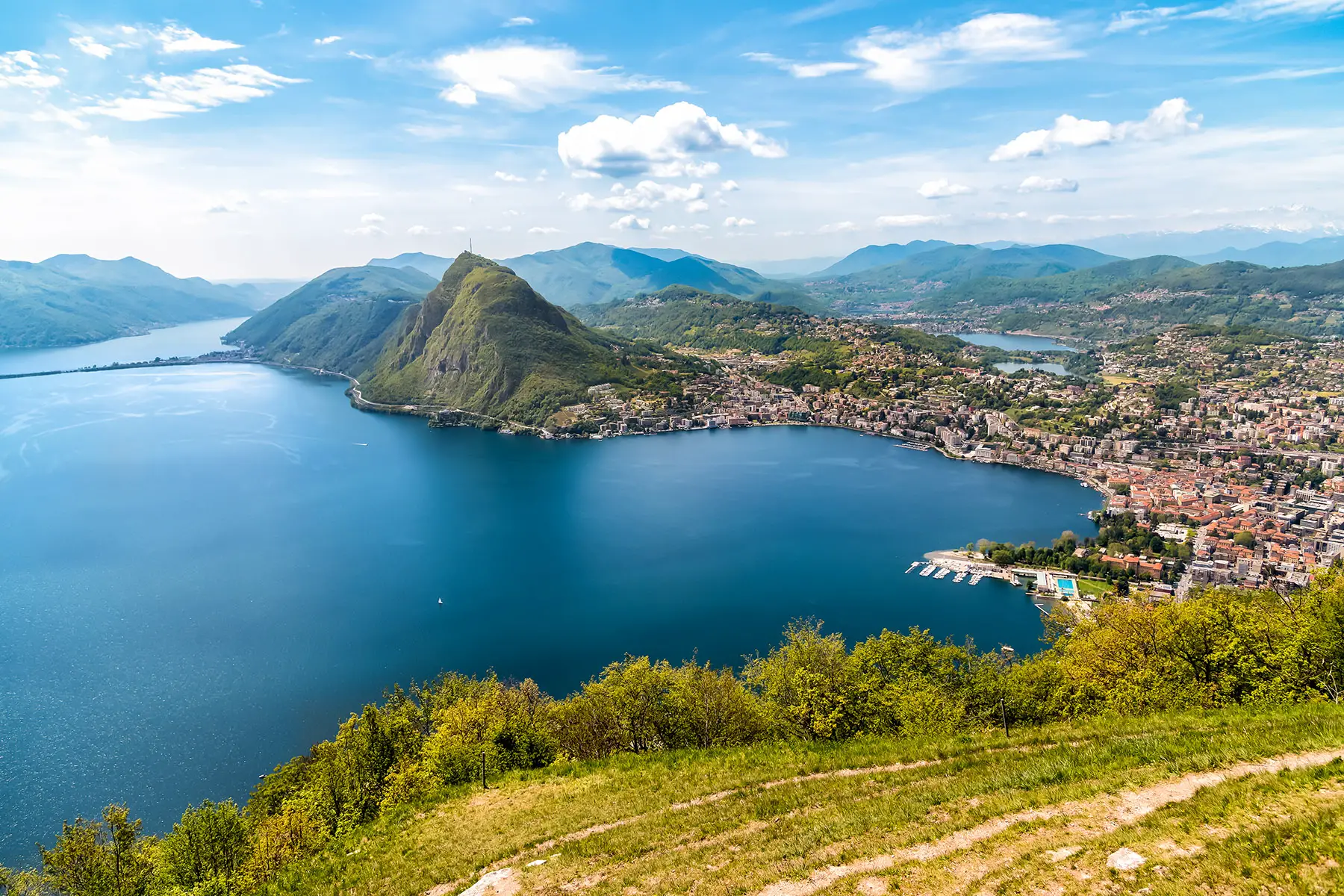
- Brissago Islands – these two small islands are located in the Swiss part of Lake Maggiore, and the larger island – San Pancrazio – is home to a beautiful botanical garden
- LAC Lugano Arte e Cultura – this cultural center is dedicated to music, visual, and performance arts and is home to the Art Museum of Italian Switzerland
- Swissminiatur – this popular family attraction is a miniature version of Switzerland and features the country’s famous landmarks
- Museo d’Arte della Svizzera Italiana– MASI Lugano is one of the most visited art museums in Switzerland and showcases more than 14,000 works of art dating back to the 15th century up to the present day
A brief history of Ticino
The earliest settlers in Ticino were the Lepontil, a Celtic tribe. However, later, the region fell under the rule of the Roman Empire, the Ostrogoths, the Lombards, and the Franks in quick succession. Finally, in the 14th century, Ticino came into the possession of the Dukes of Milan, beginning the area’s Italian rule. What are now the two largest cities in Ticino – Lugano and Bellinzona – were originally created as separate cantons by the Helvetic Republic. However, the creation of the Swiss Confederation in 1803 saw these two cantons combine to form the modern canton of Ticino.
Cuisine of Ticino
Ticino is famous for its rich culinary traditions, which are largely inspired by the food culture of Italy. The canton is famous for its salami, cheese, risotto, and polenta. And, its history of wine stretches back to the Roman Empire. As such, you can embark on a robust gastronomic journey when living in or visiting Ticino.

Whether you live in the region or are just passing through, be sure to try Arté al Lago in Lugano, Ecco in Ascona, and Da Candida in Campione d’Italia, all of which hold Michelin stars. For something low-key, however, you might want to book a table at Trattoria Cantinin dal Gatt in Bellinzona, Ristorante le bucce di Gandria in Gandria, and Metamorphosis in Lugano.
Geography of Ticino
Ticino is the southernmost canton of Switzerland. This unique part of the country sits south of the Swiss Alps and north of the Italian border, giving it an enviable culture and climate. The Monte Ceneri mountain pass also divided the canton into two. North of the pass, the Sopraceneri includes part of Lake Maggiore, Bellinzona, and Locarno, while the southern region – the Sottoceneri – encompasses Lugano and Mendrisio.
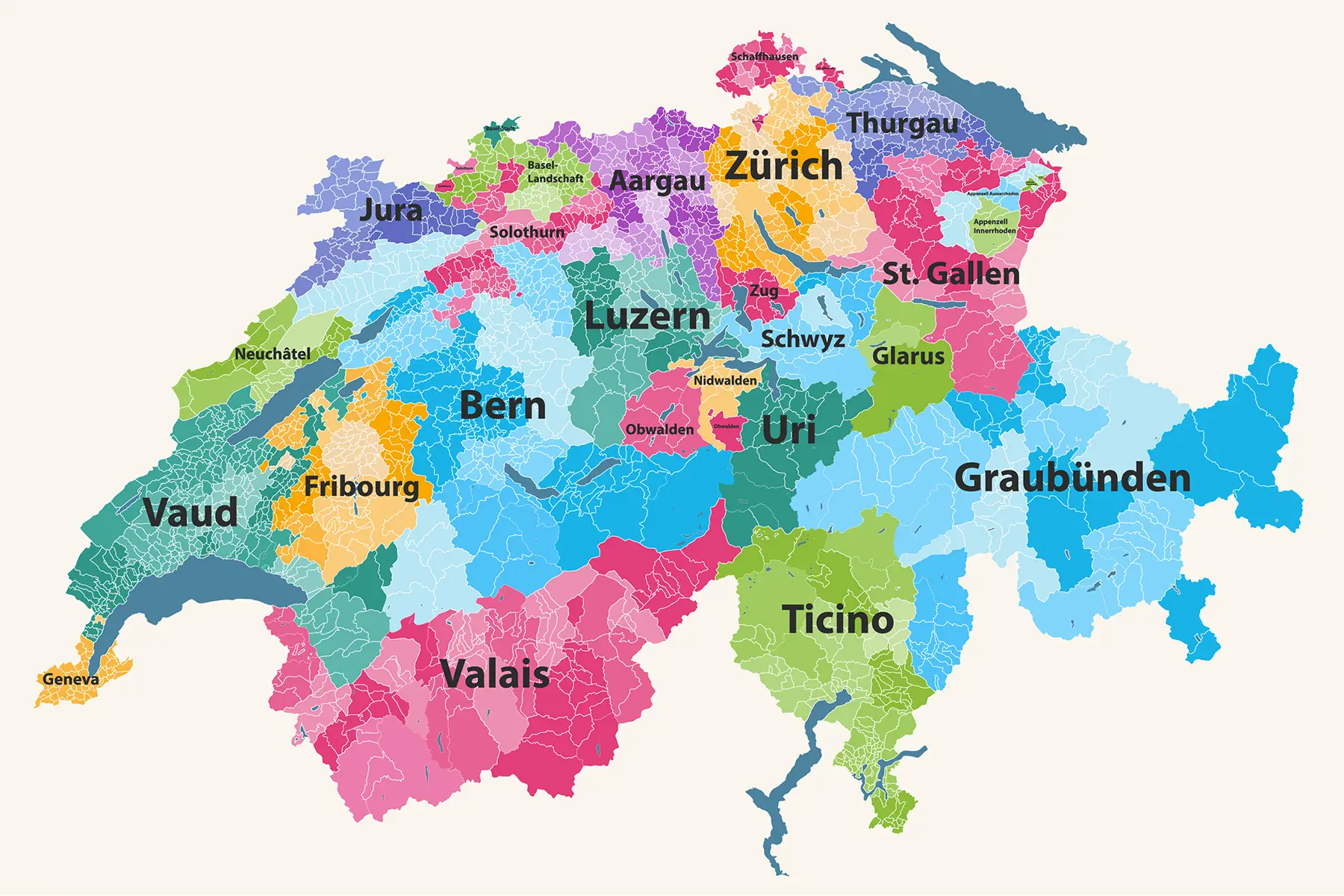
There is more than 160km of Ticino coastline to explore, including a cluster of beaches that have been rated excellent in the European Environment Agency (EEA) report. The area is also home to beautiful sparkling lakes and crystal-clear rivers that provide the perfect location to enjoy a cooling dip.
In addition to language, food, and culture, another sign that you are in Italian Switzerland is the climate. Ticino enjoys warmer and sunnier weather than other cantons in the country, with an average of 2,170 hours of sun per year; compared to only 1,693 in Zurich. Moreover, Lugano, the largest city in Ticino, receives a minimal amount of cloud cover – just 43% – in comparison to 77% in Zurich.
Economy of Ticino
Economically, Ticino residents benefit from a higher GDP per capita than the national average. They also enjoy more living space per person, along with much lower-than-average rental costs. The canton has a strong legacy of finance and banking that stretches back to 1833. Furthermore, it has a surprisingly robust chemical and pharmaceutical sector that includes 240 companies.

Mechanics and electronics are important contributors to the Ticino economy, while ICT is also becoming increasingly important. Moreover, there is a lively fashion industry in Ticino, with many companies such as Ermenegildo Zegna, The North Face, and Abercrombie & Fitch having offices in the canton.
Demographics of Ticino
In total, there is a population of just over 350,000 residents in Ticino. Most of the population, around 60%, are between the ages of 20 and 64 while nearly 30% are foreign nationals. Of course, Italian is the main language in the canton, with nearly 90% of the population calling it their main language. Only 4%, on the other hand, use English as their main language, Therefore, if you are considering moving to Ticino, you might want to look into learning Italian.
In terms of religion, more than 62% of residents in the canton identify as Roman Catholic, while 24% say they have no religious affiliation. Ticino is also quite an educated canton. Indeed, only 22.8% of the population decided not to continue their education after the compulsory requirements. Conversely, 45.2% received upper secondary education, while a further 32% reached the tertiary level.
Quality of life in Ticino
Switzerland has a high quality of life, but the Italian food and culture combined with Swiss charm and efficiency give Ticino a distinct quality. In fact, the region is home to some incredible food and wine, while festivals run year-round, including the Locarno Film Festival in August and the Estival Jazz Festival in July.
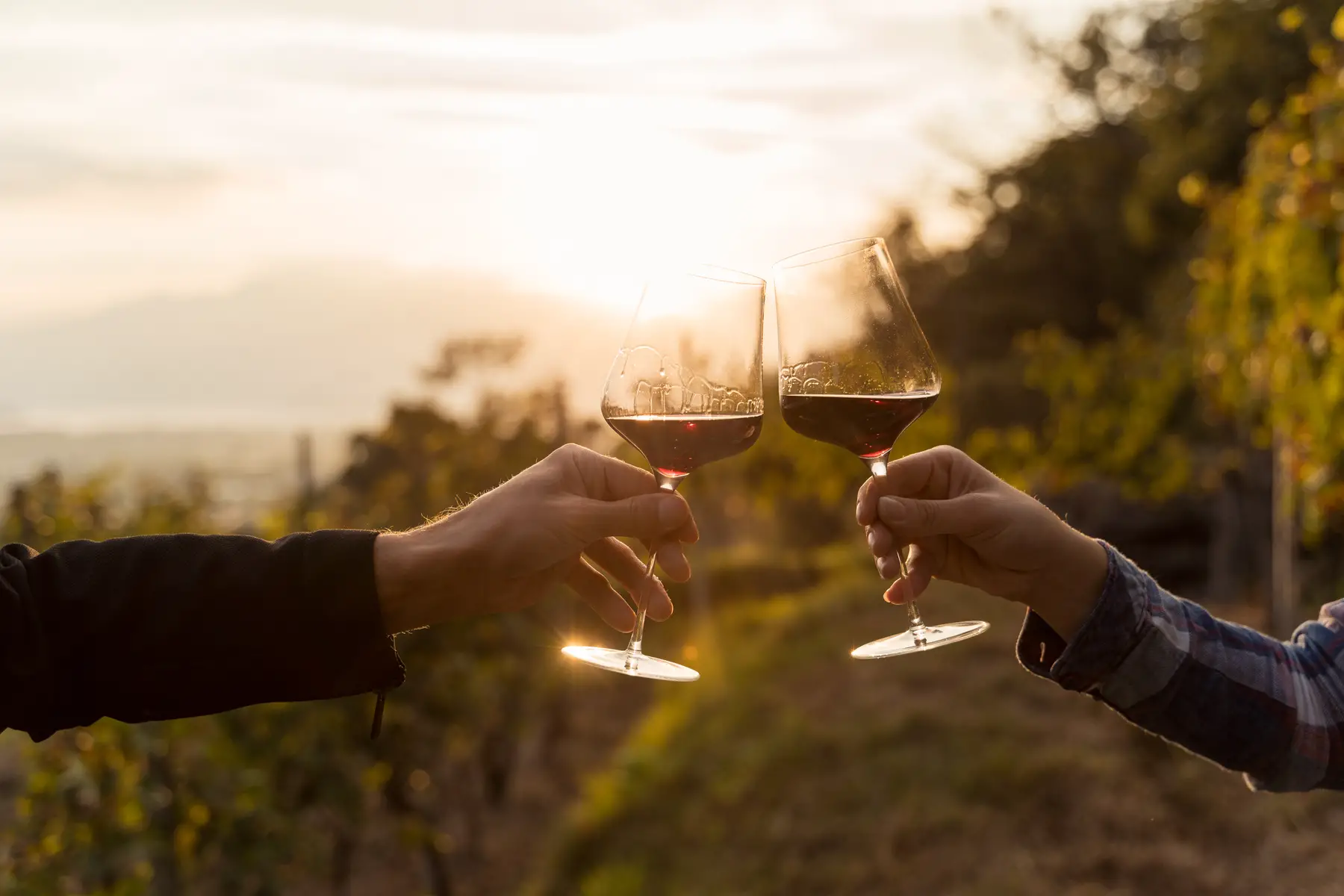
Swiss citizens also know how to look after themselves. As such, the country has the second-highest life expectancy in the world, which is the highest in Europe. This is largely owing to the country’s fantastic healthcare system, which a 2021 Commonwealth Fund study found to be highly equitable and efficient in terms of spending.
is one of the highest-ranking in the world. And Ticino is no different. Therefore, it has plenty to offer if you are seeking a healthy lifestyle.
Residents revel in kayaking on the lakes, skiing in the mountains, and hiking across pastures. But if you fancy something a little more relaxing, there are numerous local spas and wellness centers where you can relax and unwind, all the while soaking up the atmosphere of Italian Switzerland.
Ticino also has a great public transport system, making it easy to get around the canton with buses and trains. It also occupies a unique geographical position that offers its residents access to all of Switzerland and Europe. The Gotthard Base Tunnel (GBT), the world’s longest rail tunnel, also provides train connections that run from the Netherlands in the North and Italy in the south. From Lugano, residents can get to Zurich in just 45 minutes, while Milan – and Lake Como and the Dolomites – are just an hour away.
Where to live in Lugano
Lugano is the largest city in Ticino. Located on the northern shore of glacial Lake Lugano, surrounded by mountains, it is undoubtedly one of the most beautiful places to live in Switzerland. Settle here and you will enjoy a breezy Mediterranean way of life that mimics that of Italy, which lies just across the border. Although Lugano is modest in size, it does still offer some urban buzz alongside its small-town appeal.

The environment in Lugano
Lugano boasts a laid-back charm with sun-drenched squares and lakefront appeal. There are also plenty of parks around – including Parco Ciani and the Belvedere Sculpture Garden – which are filled with captivating sub-tropical plants. And much like the rest of Switzerland, Lugano is relatively safe. In fact, the city’s small-town vibe offers a sense of community where people tend to look out for each other. This, of course, makes it a highly appealing option for expats looking to settle down in the south.
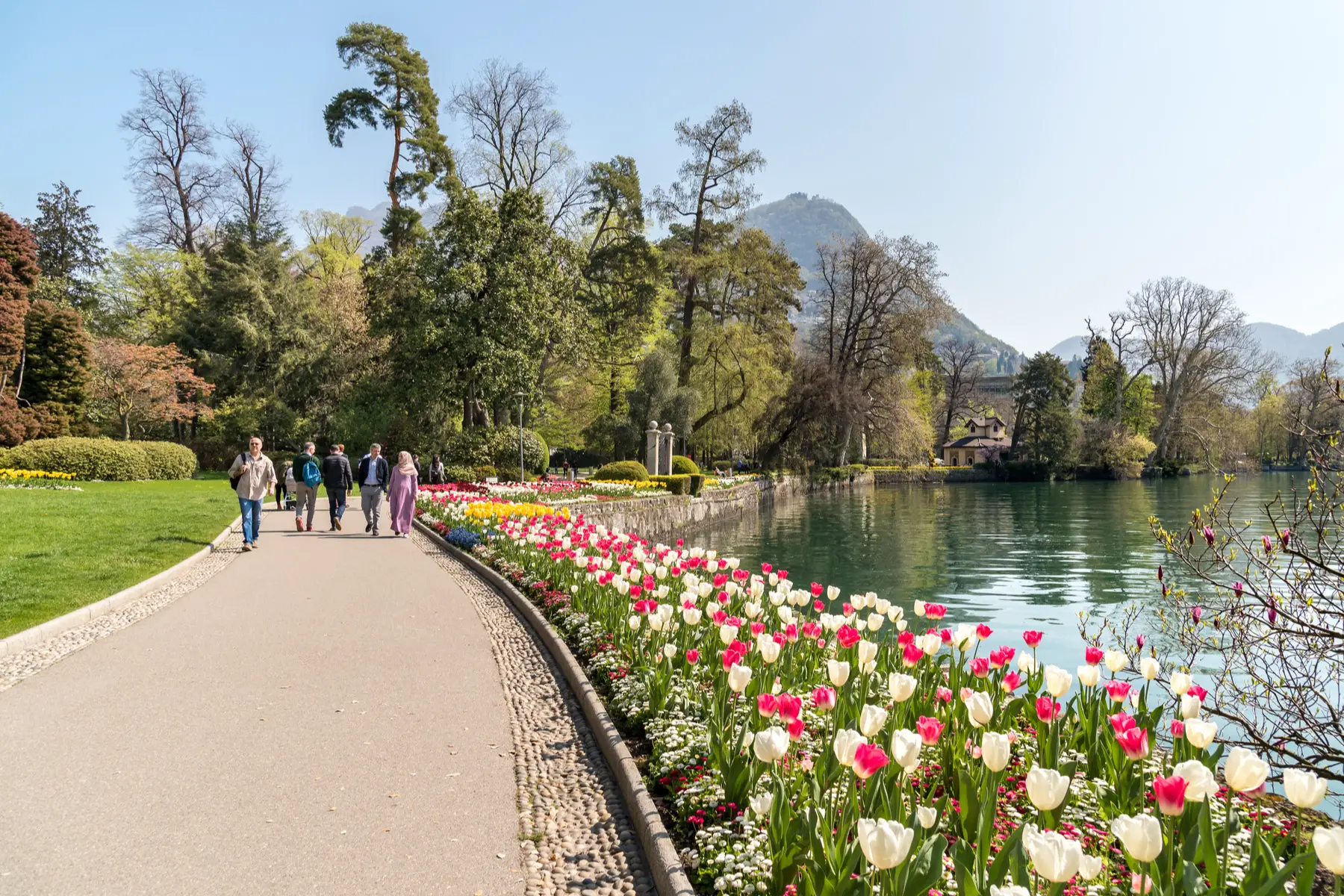
While the city can be quiet, it does offer a certain buzz in the evenings, especially during the summer months. Surprisingly, Lugano receives snow during the winter which can sometimes be plentiful. To date, the record stands at nearly three meters, which fell in 1977–1978. That said, it tends to melt before it has a chance to settle due to the southerly winds.
Needless to say, the Mediterranean warmth that prevails during the spring and summer makes it an extremely pleasant place to be. There are also several expat groups in Lugano, including the International Women’s Club of Lugano and the Lugano English Speaking Group.
Facilities in Lugano
Located at the beating heart of Ticino, you can expect plenty of things to see and do in Lugano. The city is home to many important sites of Swiss heritage, too. As such, you could spend weeks exploring the districts of Barbengo and Brè and the sites of Cantine di Gandria and Castagnola. The city also boasts two nationally significant libraries – the Biblioteca Cantonale and Biblioteca Salita dei Frati.
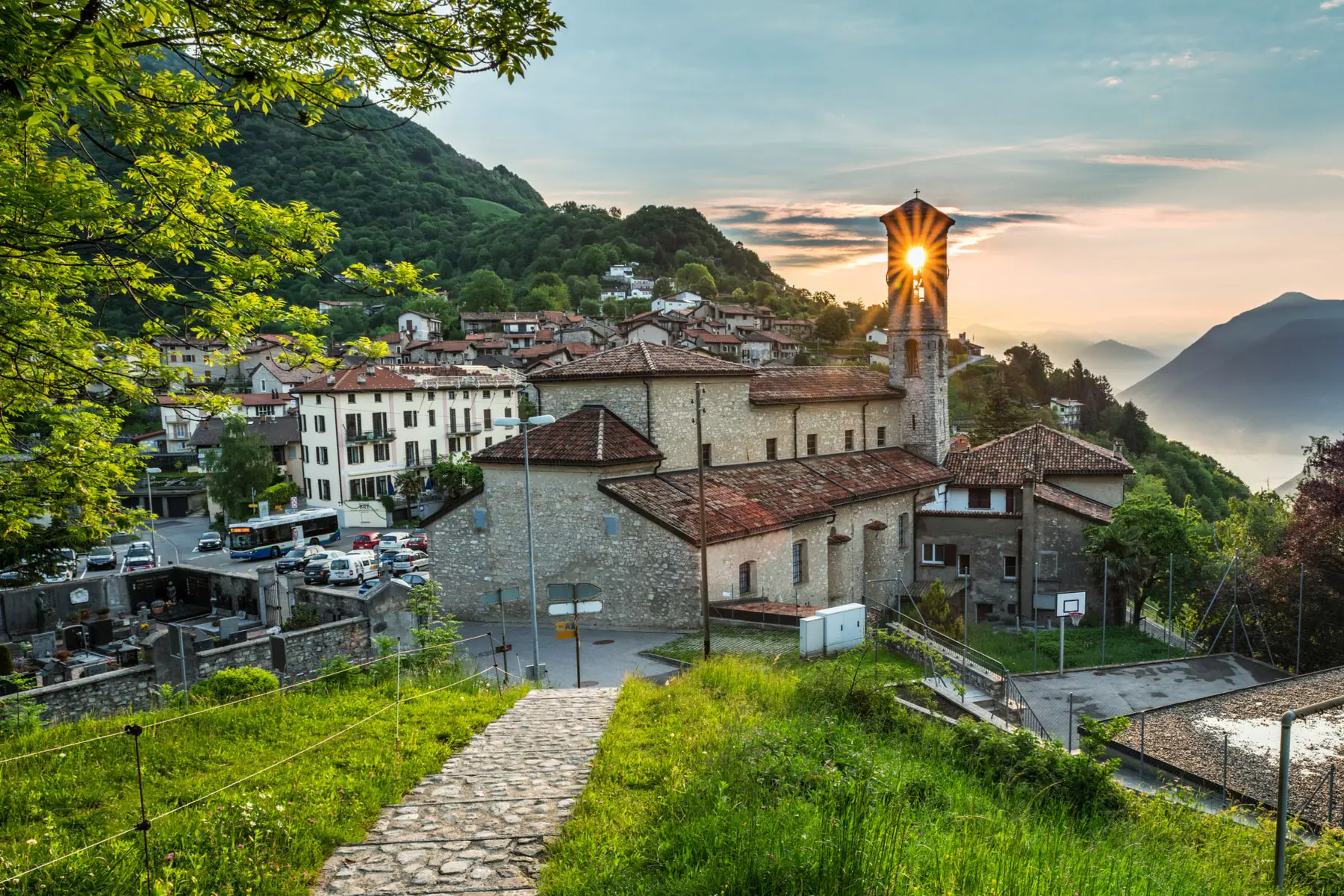
If that’s not enough to keep you entertained, though, there are charming churches aplenty, along with three museums, including the Villa Ciani network. Lugano also hosts plenty of annual events, including the Lugano Festival, the LongLake Festival, and the Blues to Bop Festival.
Furthermore, Lugano residents can enjoy access to a slew of useful amenities. It is because of this that many expats living in Ticino choose to base themselves in Lugano. Of course, there are many private and public schools in the area too, including TASIS The American School in Switzerland and the International School of Ticino.
There are also several colleges, including the USI Università della Svizzera Italiana and Franklin University Switzerland. As for healthcare, there are several hospitals and clinics in Lugano. The most popular of these, however, are the EOC Ospedale Regionale di Lugano, the Clinica Luganese Moncucco, and the Clinica Sant’Anna.
Transport in Lugano
Due to its modest small, most residents in Lugano get around the city by either walking or cycling. As such, you won’t have to worry about buying a car when living there. Lugano also has many transport links that will get you around Ticino and beyond. Silver Air and Swiss International Air Lines also operate out of Lugano Airport. For more flight options, though, you can always jump on a train to Milan and fly out of the city’s two airports.
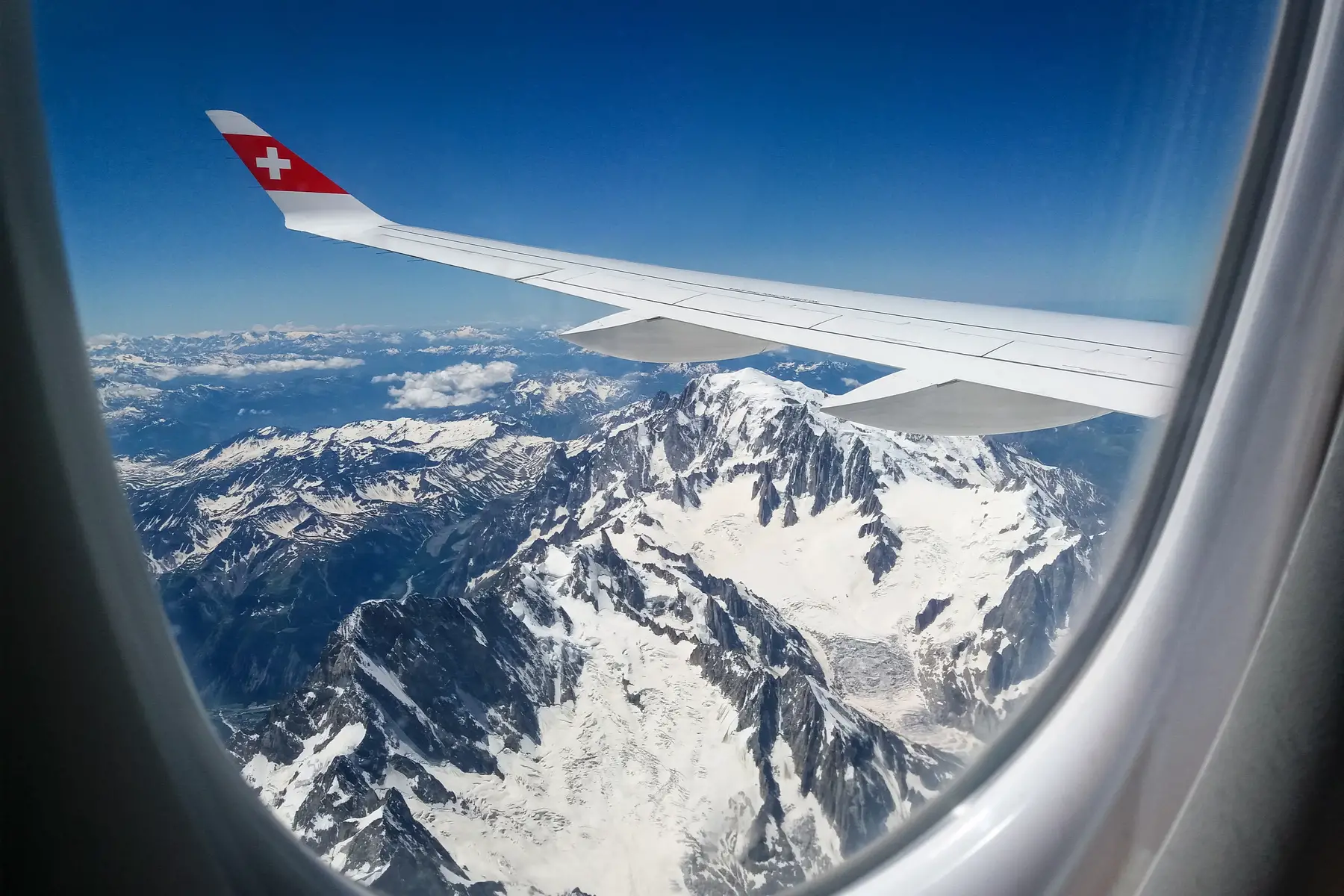
Lugano’s main railway station also offers services to Milan with Trenitalia, and northern Swiss cities with Swiss Federal Railways. In addition, there are Regional-Express services to many of Ticino’s towns and villages, along the historic Gotthard panoramic route. Lugano also has three funiculars, of which the most important is the Funicolare Città-Stazione that connects the train station to the town center.
Housing in Lugano
When it comes to housing in Lugano, you can expect everything. Because the city offers everything from modern apartments and grand villas to rustic chalets, you can live exactly as you want. That said, it will cost you. If you want to buy a property, then a small central apartment might set you back CHF 450,000.
A lavish six-room house with mountain views, on the other hand, can cost up to CHF 12,500,000. If you want to rent, though, then prices are certainly more affordable. For instance, you can find small studios for about CHF 700/month, but expect to pay around CHF 8,000/month for a sprawling lakeside house.
Work and business in Lugano
Lugano is Switzerland’s third-largest financial center. As such, there are many banking jobs available there. Of course, tourism is one of the city’s main economic lifelines, so many residents work in hospitality, too. Darwin Airline, a regional Swiss airline, also has its headquarters at Lugano Airport. Many people also commute into Lugano for work from the surrounding small towns, and even Italy. If you can speak Italian, then you might find it easier to find a job in Lugano.
What this city is best for: Easy Mediterranean living with a touch of urban buzz.
The best places to live in Bellinzona
Bellinzona is the capital city of Ticino and certainly captures the imagination with its striking medieval architecture. Located on the southern side of Lake Maggiore, but in a decidedly inland location, it truly brings history to life for those who live there. And while it is quieter than other parts of Ticino, you likely won’t mind that if you live there.

The environment in Bellinzona
Bellinzona is a city of living history. As such, it can be a little quiet during the evenings and off-peak season. Although the main area has a decidedly urban feel, it’s the urban of medieval times, with cobblestone alleyways and hidden squares creating a sense of times gone by. There is still plenty of dynamism to be found in the city center, though, including a plethora of quaint boutiques and cafés. Despite having an abundance of schools, Bellinzona is perhaps not the best choice for families, especially expat ones. Still, if you do choose to live there, you will be in good company, as around 26% of the population is foreign-born.
Facilities in Bellinzona
There is a very Italian vibe to Bellinzona. Indeed, while Lugano is physically closer to the border, it’s Bellinzona that truly captures the sense of history that makes Rome and Florence so popular. First, there is the 19th-century Teatro Sociale, a small Italianate theatre that captures the magnificence of Venice’s La Fenice or Milan’s La Scala. Then there are the three UNESCO-listed castles, the 13th-century Castelgrande, the 14th-century Montebello, and 15th-century Sasso Corbaro.

And finally, there is the grand trio of churches. The Santa Maria delle Grazie, the Gollegiata dei Ss Pietro e Stafano, and the Church of San Biagio in Ravecchiai are all on the Swiss list of historically important buildings. Similar to Lugano, Bellinzona hosts its own series of events throughout the year, of which Rabadan – Ticino’s most famous carnival – is the most popular.
Families will have plenty of educational options in Bellinzona, too, as the city is home to numerous schools. That said, these are mostly public, and students will do better if they speak Italian. The Swiss School of Management (SSM) is also located in Bellinzona. Of course, there are also several hospitals, including the Centromedico Bellinzona and EOC Ospedale Regionale di Bellinzona e Valli. The EOC Instituto Oncologico della Svizzera Italiana, a major regional cancer center, is also based in Bellinzona.
Transport in Bellinzona
While living in Bellinzona, you will probably be doing plenty of walking. However, should you wish to get away, there are plenty of transport options. The Bellinzona train station, for instance, is a major stop along the iconic Gotthard railway. As such, residents can easily travel to Lugano, Locarno, and Zurich, or further afield to Milan’s Malpensa Airport. There is also a PostBus station that runs services throughout Ticino. And, if you happen to have a valid driver’s license and a car, you can also jump on the A2 motorway to get to Lucerne and Basel or Germany and Italy.
Housing in Bellinzona
The housing of choice in Bellinzona is generally an apartment near the city center. If you are lucky, though, you may be able to snap up a charming village house away from the crowds. Still, living in Bellinzona is not exactly cheap. In fact, rentals might run as high as CHF 3,000/month; although more modest accommodation can be had for about CHF 900/month. Bellinzona’s high property prices especially apply if you are thinking about buying a house in the city.

If you can get your hands on one of the historic Italian-style villas, then you should consider yourself very lucky. That said, it will cost you a cool CHF 7,000,000. More affordable standalone properties – with four or five rooms – can be found for about CHF 2,000,000. At the lower end of the scale, however, you may be able to pick up an apartment for around CHF 300,000.
Work and business in Bellinzona
Switzerland specializes in the tertiary sector, and most of the jobs in Bellinzona also fall into this category. In fact, the city’s main industry focuses on mechanical engineering. Of course, tourist facilities and hospitality outlets are also major employers. That said, a good percentage of Bellinzona’s workers commute into the city for work but live elsewhere.
What this town is best for: Living amid history and enjoying a slice of local life.
Where to live in Locarno
Perched on the northern shore of Lake Maggiore and the south side of the Swiss Alps, picturesque Locarno has a lot going for it. Stunning natural surrounds are a given, of course, as is a temperate climate with plenty of sunshine and warm temperatures. It might be a bit more expensive than other parts of Ticino, but it’s also a good choice for expat families.
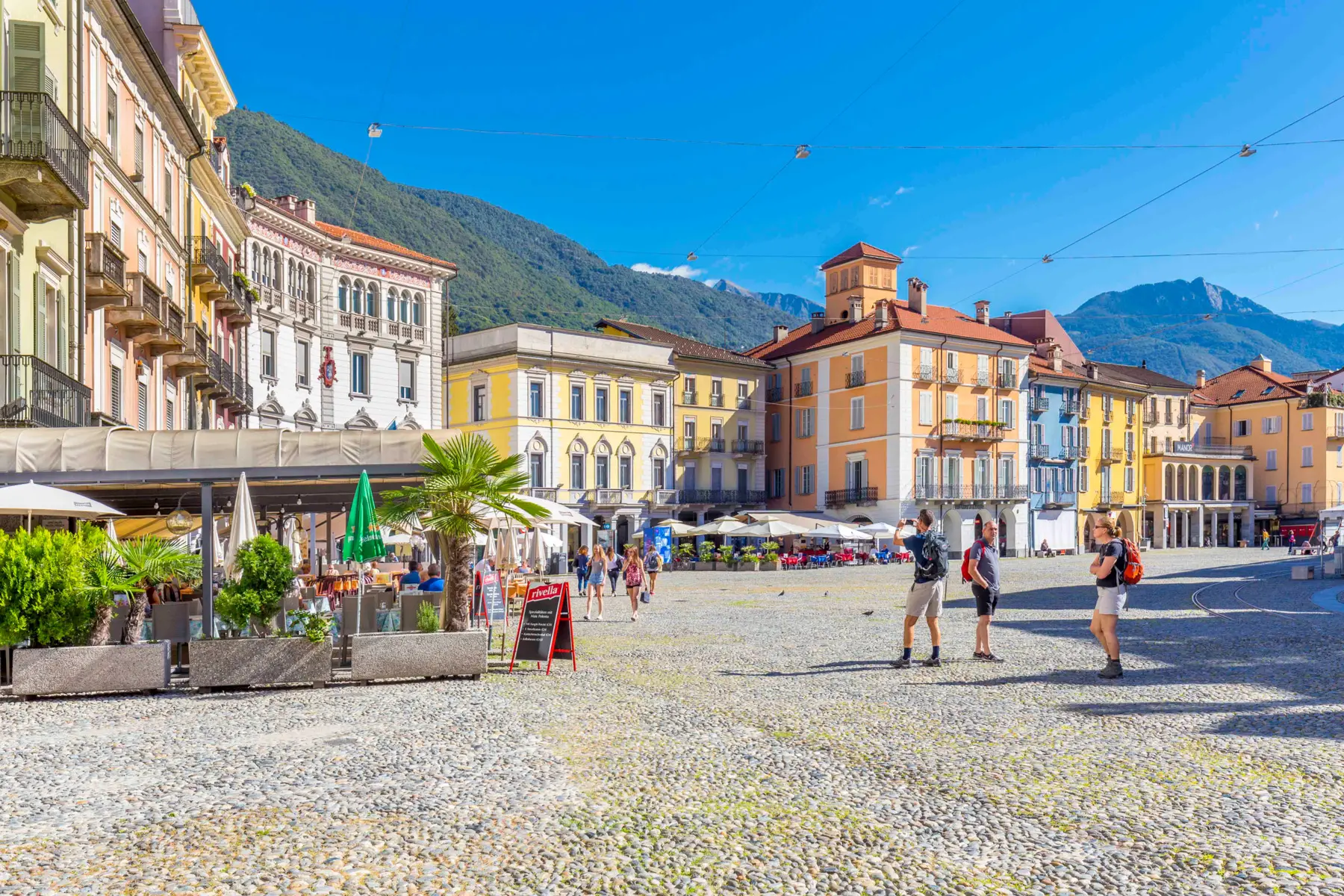
The environment in Locarno
For families that love the outdoors, Locarno is a real playground. The city is home to numerous parks including Parco delle Camelie, Giardini Jean Arp, and Giardini Rusca. Furthermore, its location on the edge of Lake Maggiore means that it has a Lido and opportunities for watersports.
As Locarno borders the southern fringes of the Swiss Alps, there is plenty of hiking and winter sports to be had, too. Generally speaking, Locarno is a safe and peaceful place to live and offers a great quality of life for younger families. And because some 34% of the local population are foreign nationals, expats will also feel welcome there.
Facilities in Locarno
Although Locarno offers a plethora of schools, most of them are public and Italian-speaking. As such, expat families may want to have their children commute to Lugano to attend one of the region’s international schools. Similarly, while there are several hospitals and clinics in the area, expats will want to have the EOC Ospedale La Carità on speed dial.
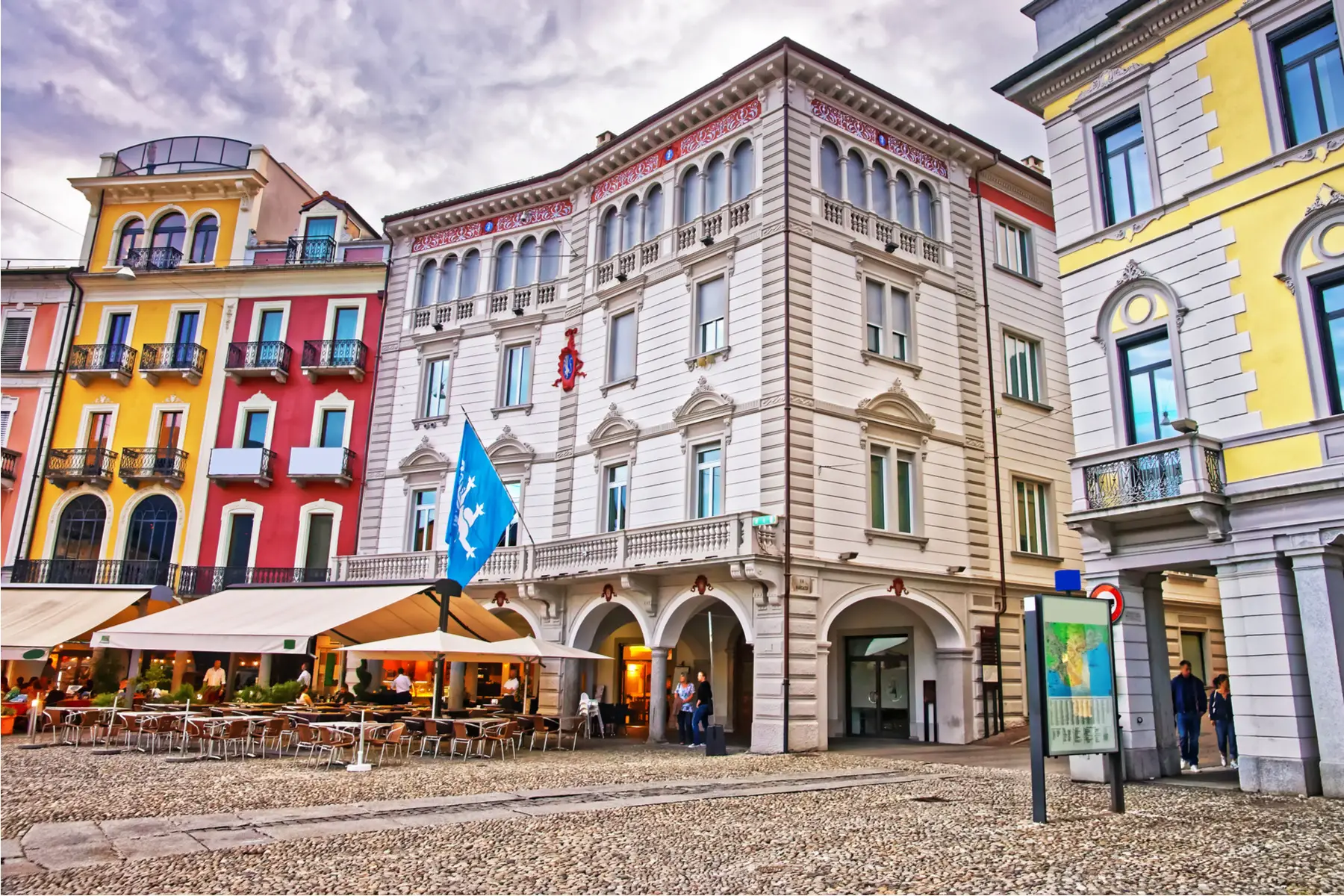
With so many things to see and do, living in Locarno promises to be unending fun. The Piazza Grande in the picturesque Città Vecchia (Old Town) has a slew of great shops. In the summer, it also hosts the famous Locarno Film Festival and plenty of other events. While there, be sure to visit the Santuario della Madonna del Sasso monastery, a Locarno landmark, and the 12th-century Castello Visconteo.
There are also lots of art galleries to check out, including the Casa Rusca, while nearby Valle Verzasca is an astonishingly gorgeous valley with azure waters and rock formations. Of course, Lake Maggiore is located in the area, too, so there is plenty of summer fun to be had on the water.
Transport in Locarno
Cars and trains are generally your best bet to get in and out of Locarno. In fact, the city has direct train connections with Lugano, Zurich, Basel, and Milan. The nearest airport, however, is in the Lugano region. That said, you can connect to Milan Malpensa by taking the train to Bellinzona. Within the Ticino region, buses will get you where you need to be, whether it’s Ascona, Maggia, Valle Verzasca, or Sonogno.
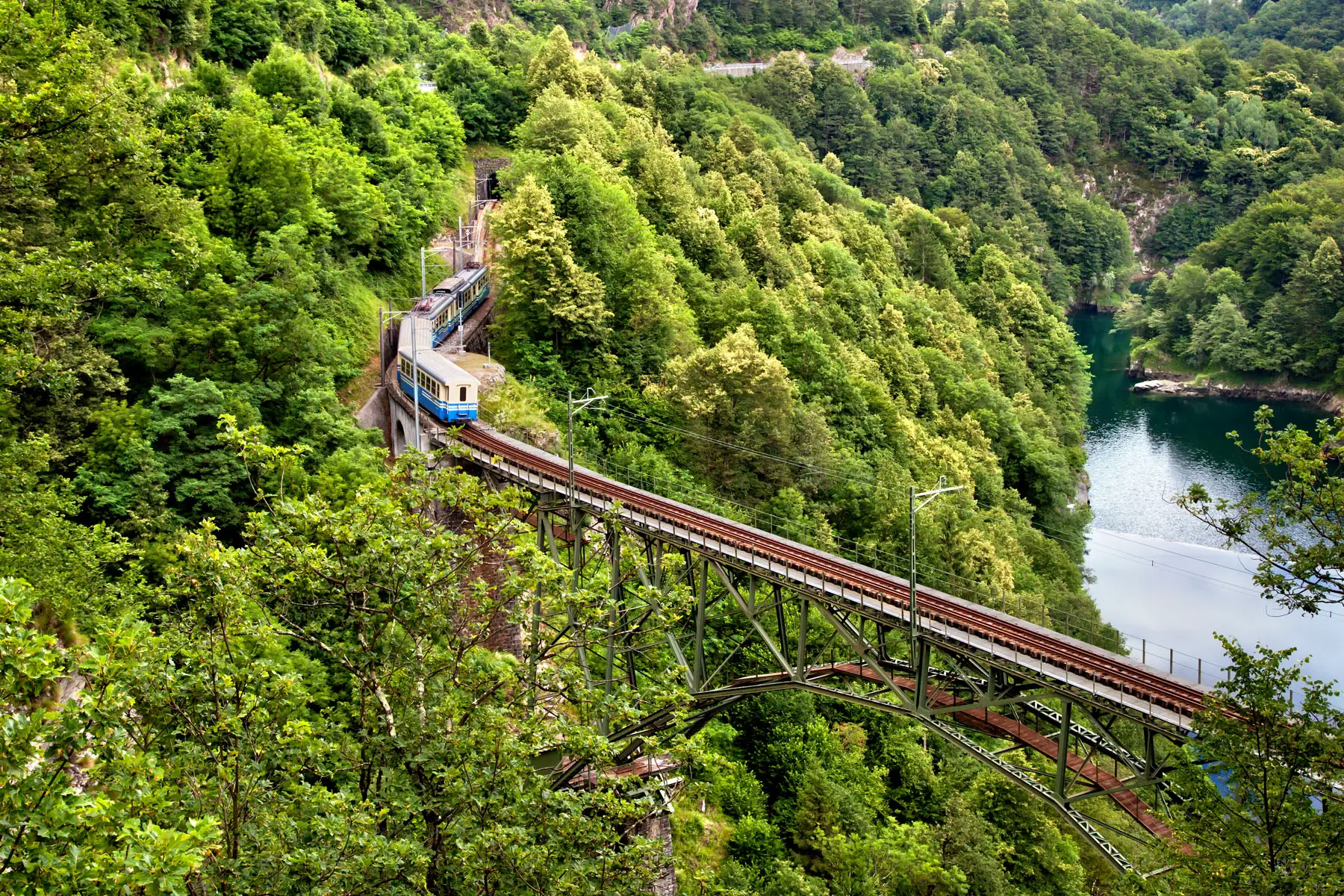
When it comes to getting around Locarno, however, you will travel under your own steam. Indeed, most of the city is best explored on foot as almost everything is within walking distance. Bikes are also popular and are available through the VELOSPOT bike-sharing network.
Housing in Locarno
Accommodation in Locarno ranges from modest apartments to grand, modern lakeside mansions and historic Italianate villas. Just keep in mind that housing there can be on par with prices in the bigger cities. If you are looking to buy, then you can expect to shell out between CHF 2,000,000 and CHF 4,000,000 for a flashy villa with views; or perhaps CHF 300,000 to CHF 500,000 for a more modest apartment in the city center.
If you are on a budget, however, then you could rent a low-key apartment on the outskirts for around CHF 900/month. For something in between, you should aim for a charming apartment with views for around CHF 2,000 to CHF 3,000/month.
Work and business in Locarno
There are some 7,000 companies and 27,000 jobs in Locarno. As such, finding work there is certainly possible. The city’s major industries are mechanical engineering, electronics, and – perhaps surprisingly – film. In fact, it is because of the robust film industry that the city hosts the annual Locarno Film Festival. There is also a dedicated Industrial Zone in Locarno, which is home to many cutting-edge companies.
What this city is best for: Expat families
Other towns to consider in Ticino
Of course, the canton of Ticino is home to many other towns and villages. So, whether you are looking for a smaller, quieter place to live or want to explore more of the area, there are plenty of options.
Here are a few of the top picks:
- Ascona – a former fishing village that features photogenic painted houses by the waterfront, rich medieval and Renaissance history, and incredible dining
- Morcote – boasting the title of “Switzerland’s most beautiful village,” lakeside Morcote charms with boutique-filled backstreets, photogenic painted houses, and the Parco Scherrer gardens and alfresco museum
- Bosco Gurin – go back in time in the only German-speaking village in Ticino, which features traditional wooden Walser homes and alpine vibes – yes, you can ski here in winter!
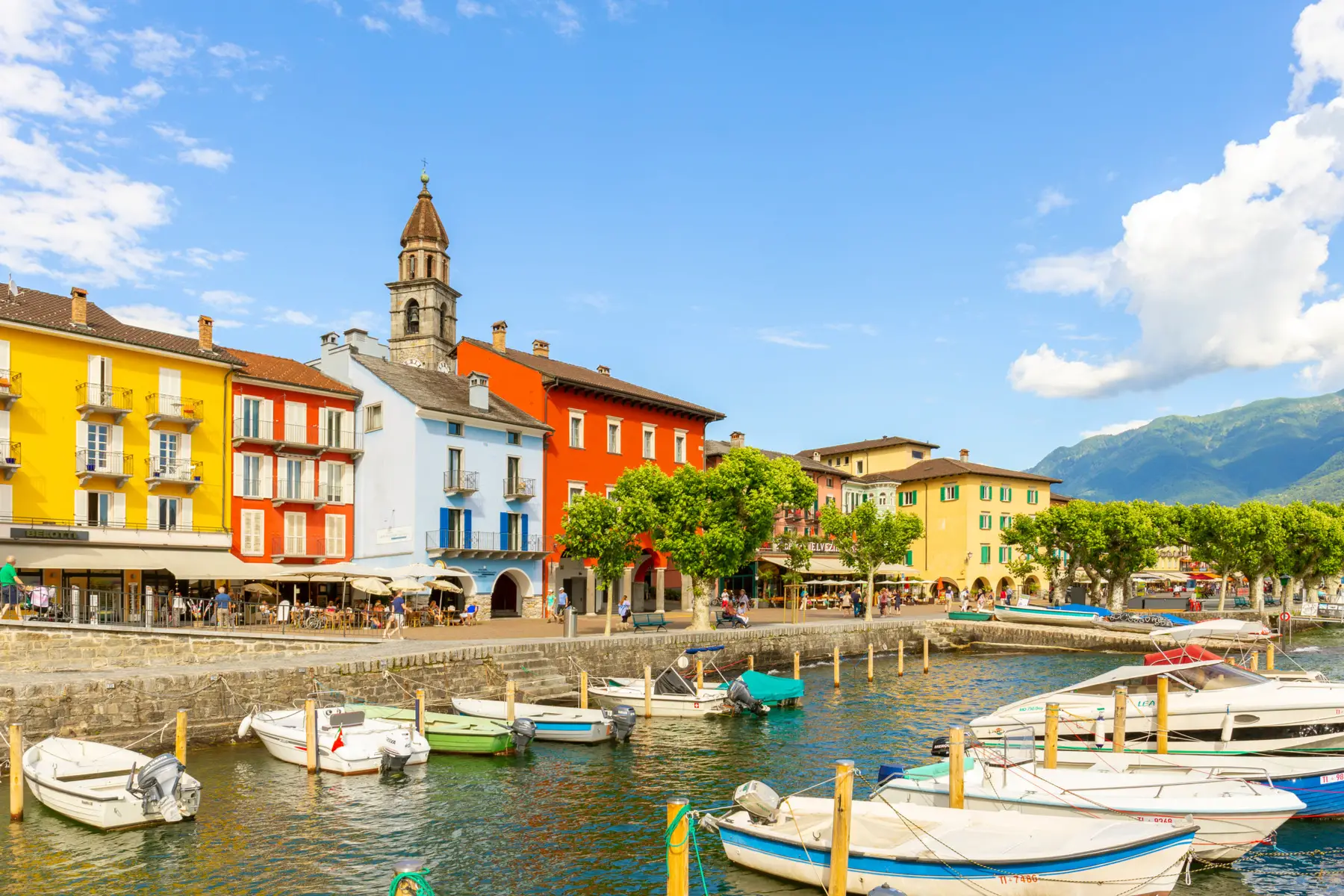
- Lavertezzo – a picture-perfect village that features a 17th-century stone bridge over the Verzasca River
- Giornico – a tranquil village in the Levantina Valley that features the Romanesque Church St. Nicolao and 16th-century Leventina Ethnographic Museum
- Mendrisiotto – technically a district, Mendrisiotto features town centers surrounded by vineyards, medieval and Baroque architecture, and incredible wining and dining options
Where to find housing in Lugano and other cities
If you are searching for accommodation in Ticino from overseas, then your best bet is to go online. There are numerous websites that specialize in Swiss properties, and many of them have options in Ticino. Some of the most popular accommodation search sites are:
You will be able to find properties to rent and buy in Lugano, Bellinzona, and Locarno on these sites. Just bear in mind that listings are almost always in Italian, so you may have to do some translating or enlist the help of an Italian-speaking friend.

Of course, you can always use a property agent on the ground. While this can save you time, it can also be more expensive. Nevertheless, an agent can be useful if you are already in Ticino, have particular needs, or are looking to buy a property.
Places to avoid in Ticino
Switzerland has a reputation for being one of the safest countries in the world. As such, you won’t have to worry too much about crime or your personal safety. Of course, as with anywhere, you should always watch out for petty crime. However, the canton of Ticino is particularly safe, which is perhaps due to it being less populated than other parts of Switzerland. Nevertheless, just remember to employ common sense and you will be fine.
Tips on choosing where to live in Ticino
- Visit a few towns and cities to get a feel for them and decide what you like and don’t like
- Decide whether you want something with a little buzz (like Lugano) or something very low-key (like Bosco Gurin)
- Talk to people who live in the area and ask them what they think of the different options
- Figure out if you want to live somewhere that is quite remote or a town that is well-connected and offers easy traveling and commuting
- If you have a job lined up, then figure out exactly where your office is and how far you want to live from it
- If you are moving with a family, then you might want to live in a town that has more family-friendly amenities such as playgrounds, hospitals, schools, and museums
- See if you like the housing that is available in the town or city and whether the options fit your budget
- Figure out if the town or city is expat-friendly or if you will struggle with language and interactions
Useful resources
- My Switzerland – the official Swiss tourism website which provides information about the top destinations in Ticino
- Lugano Region – the official Lugano tourism website which offers information about activities and events in the city
- World Travelers Club – an article on What to do and see in Lugano
- Travel Awaits – and article on 8 Gorgeous Places To Visit In Switzerland’s Enchanting Mediterranean Region





